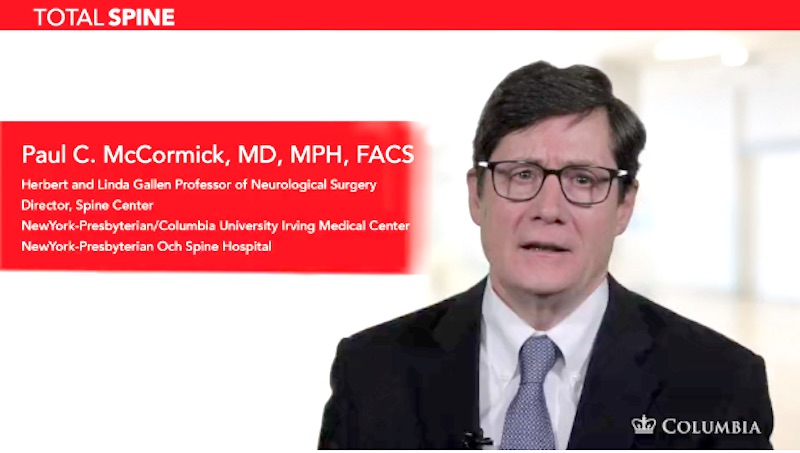Minimally invasive thoracic and lumbar fusion can be accomplished with the following procedures:
- Transforaminal interbody lumbar fusion (TLIF) – using this minimally invasive technique, the surgeon can achieve fusion of both the front and back parts of the spine during one procedure.
- Lateral lumbar interbody fusion (LLIF) (also known as XLIF tm) – using this minimally invasive technique, the surgeon approaches the spine from the side. This approach produces the least disruption to muscles, bones, and abdominal organs.
In adults and children, minimally invasive spinal fusion is performed under general anesthesia, which means the patient is unconscious.
In minimally invasive surgery, the surgeon makes small incisions. The number, location, size and shape of the incisions vary depending on the location of the problem and the approach the surgeon has selected.
For most types of minimally invasive spinal fusion, the surgeon uses instruments called tubular dilators. These are tubes of expanding diameter that move aside the muscles and other tissues located between the skin incision and the spine. The dilators create a tunnel through these tissues down to the spinal column. An instrument called a tubular retractor holds the tunnel open while the surgeon works. Some surgical procedures require more than one retractor.
Unlike in some traditional surgical procedures, in minimally invasive procedures, surgeons may have a limited view of the surgical area. In order to see the area, surgeons may use an operating microscope positioned at the top of the retractor, or an endoscope (thin tube with a camera and a light at the end) that passes down through the retractor into the body. The surgeries also tend to rely more upon intraoperative radiographic imaging to guide the surgeon.
If another minimally invasive procedure must be performed during the same operation, it is performed first. This is often a decompression procedure, performed to relieve pressure on the spinal cord or surrounding nerves. Bone or disc sections removed during a minimally invasive decompression are extracted through the tubular retractors.
Then the surgeon performs the spinal fusion through the retractor. To fuse the vertebrae, the surgeon places new bone material, called bone graft, as a bridge between existing bones. The graft may come from a bone bank or it may be taken from the patient’s own body. Sometimes bone removed from the patient during the decompression portion of the surgery can be used as a graft; other times, the bone is taken from the patient’s iliac crest (hip bone). Depending on the type of surgery, bone from the hip may be removed through the same surgical incision or through a separate incision.
To aid in bony fusion, the surgeon may also use a “bone promoting substance” like bone morphogenic protein, or BMP. BMP aids in bone growth and is naturally produced by the body. Other materials, like synthetic bone graft extenders or processed bone (called demineralized bone matrix) may also be used in combination with the bone graft and/or BMP. These materials can add volume to the bone graft without the need to harvest more bone. Newer technology involves using concentrated bone cells or stem cells either harvested from the patient or from a donor. The use of some of these substances is controversial in pediatric patients; speak with a pediatric neurosurgeon for the most up-to-date information and recommendations for particular cases.
Most surgeons also insert hardware such as screws, rods or plates as part of a fusion procedure in order to hold the bones in place until they heal. This procedure is called fixation. Fixation is also performed through the retractor. The surgeon then removes the retractor and closes the incision.
In some cases, a back brace will be prescribed to hold the spine in one position while the bones begin to fuse.
| 

